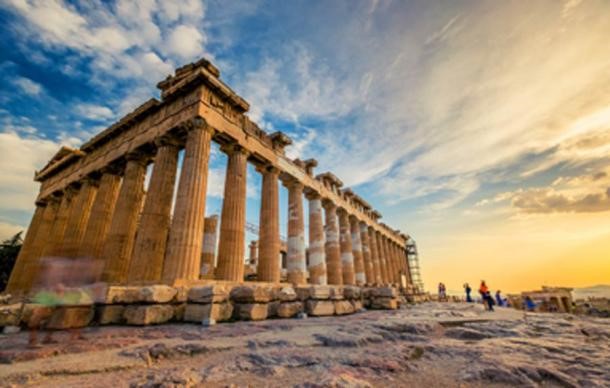
The Acropolis of Athens is the most famous of the many acropolises from ancient Greece. The Acropolis we know today was initially constructed in the 5th century BC under Pericles, a governor of Athens, but the location had been settled as far back as 4,000 BC.
Today, a number of ancient Greek buildings survive at the site, which is a designated UNESCO World Heritage Site. Each surviving building is incredible in its own right (it is the home of the Parthenon, for instance) but together they offer a unique insight into the world of the ancient Greeks and the people who lived there more than 2,000 years ago.
The buildings and monuments at the Acropolis are emblematic of ancient Greece, and this has resulted in the Acropolis having a lot of influence on neo-classical architecture. Ancient Greece is often romanticized and heralded as an era of great thought and advancement of knowledge. The influence of the Acropolis on architecture throughout the Western world has been profound, and as a historical site it is as fascinating as it is inspiring.

Columns of the Parthenon at the Athens Acropolis. (Alex Green / Adobe Stock)
One of the first buildings to be constructed at the site between 570 BC and 550 BC was a temple to Athena, the patron goddess of the city of Athens. Remnants of this first temple are still visible at the site today.
When Athens was at the peak of its power, work began on another temple to Athena. Built on the site of the Pre-Parthenon, the Parthenon is now widely considered the most significant surviving example of ancient Greek architecture. The superb sculptures at the Parthenon are regarded as some of the finest examples of ancient Greek art and it has come to symbolize the culture of ancient Greece . As well as functioning as a temple to Athena, the Parthenon also served as the treasury to the city of Athens which was a common secondary function of temples in ancient Greece.
The Theatre of Dionysus Eleuthereus was an enormous open-air theater which could seat up to 17,000 people. It is considered to be the first theater in the world, and it was carved into the southern cliff face of the Acropolis.
Further entertainment could be found in the Odeon, an enormous structure supported by ninety pillars which was built next to the Theatre of Dionysus. It was intended to stage musical contests for an event held in Athens which was said to rival the Olympics in popularity. The Odeon at the Acropolis was a covered building so people attending would be protected from any potential rain.
At the foot of the Acropolis was an area called the agora which was a sprawling marketplace. The agora was the meeting place for the Athenian people for 3,000 years – rather than being at the heart of ritual and religion, the agora was the center of everyday life in ancient Athens. It was the hub of political, social, and commercial life in the city.
As it is such a unique and incredible site, the Acropolis of Athens has been designated as a UNESCO World Heritage Site. It is considered so culturally and historically significant that it is now protected under international law.
Read more about the Acropolis of Athens.
Top image: The Acropolis of Athens. Source: moofushi / Adobe Stock.






